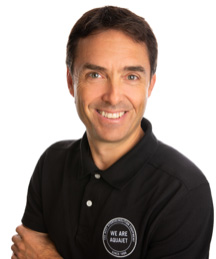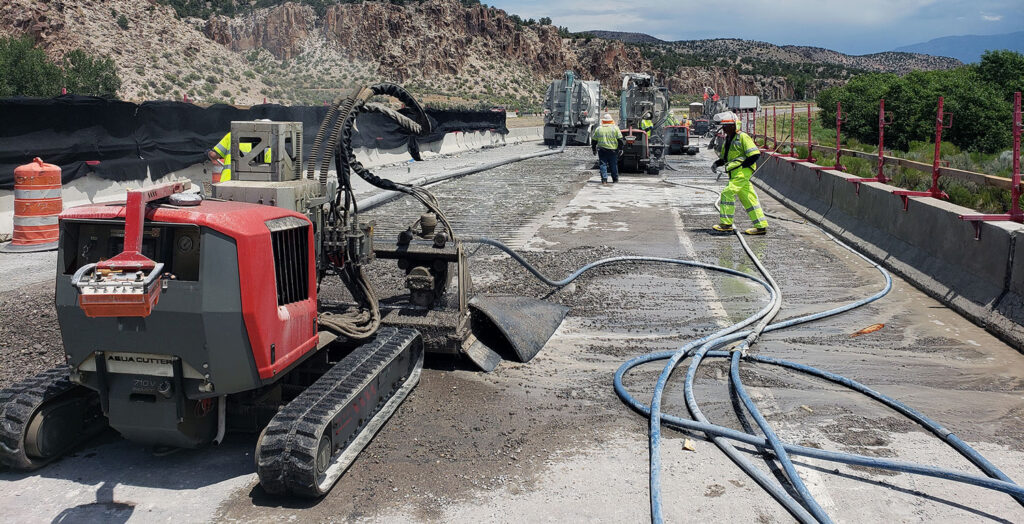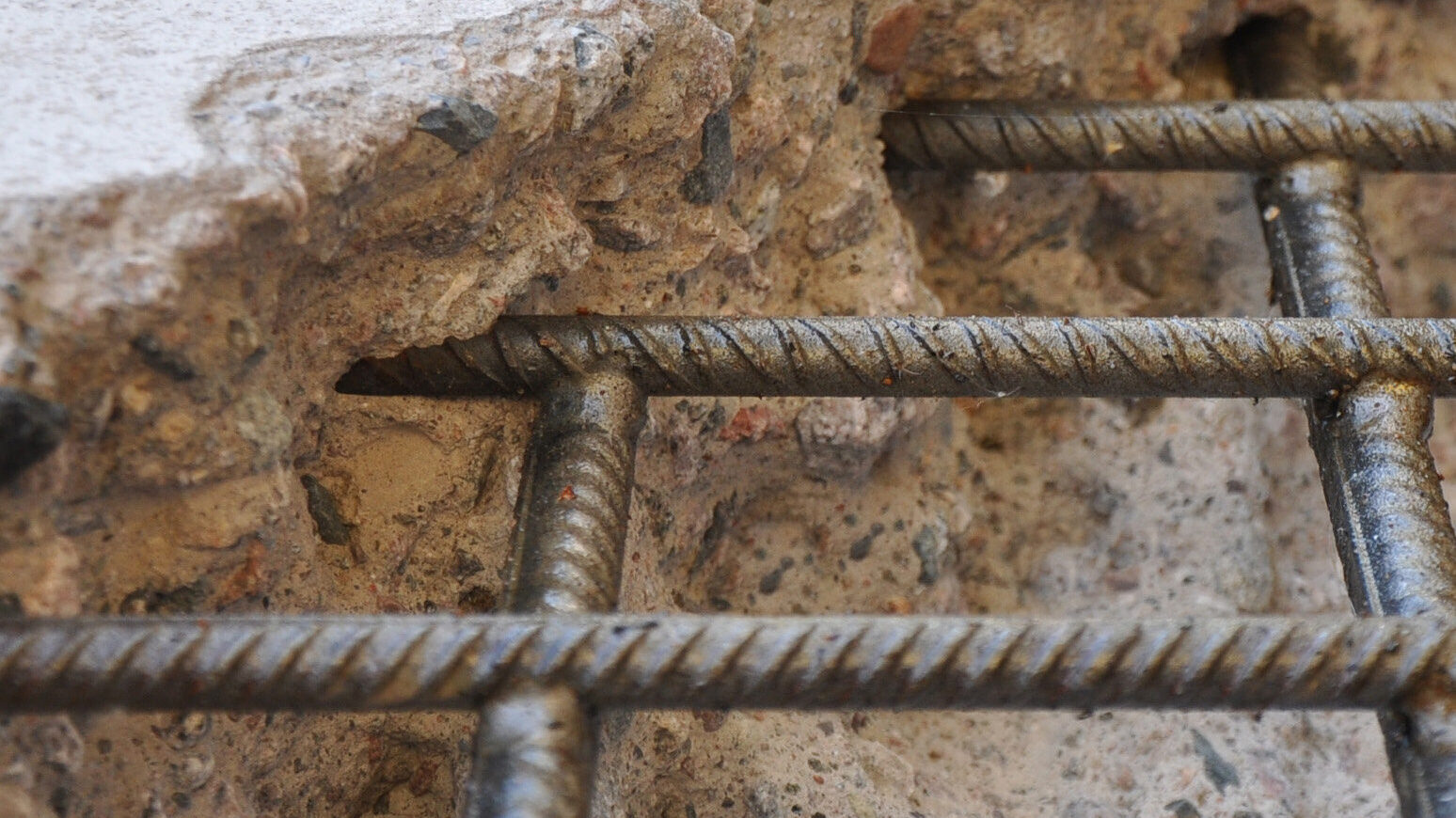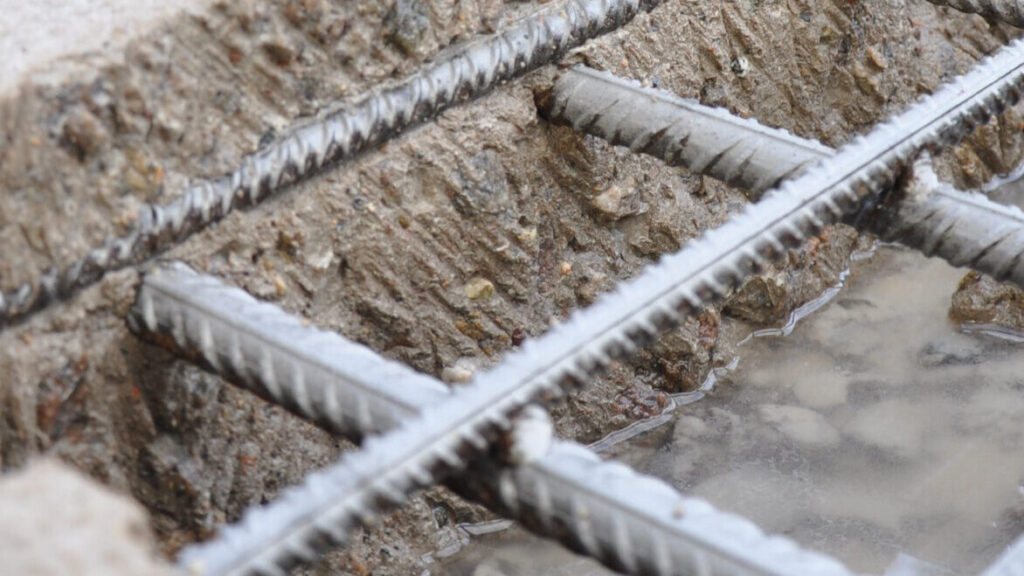Every industry has them — the questions you get asked over and over. Despite being around for more than 40 years, Hydrodemolition is still an intriguing new process for a large portion of the population. And they have questions.
Keith Armishaw, Aquajet’s North American business development manager, answers five of the most common Hydrodemolition questions.

This is probably the question we get asked the most. It’s also one of the hardest to answer since there are a lot of variables to consider. To give an accurate answer, you need to know the compressive strength and aggregate size of the concrete; the amount and size of rebar; the state of decay; removal depth; and the pressure and flow of the high-pressure pump, but we can provide some basic estimates.
For example, let’s say we have concrete with a compressive strength of about 5,000 psi and want to remove at a depth of 4 inches. In an hour, our Aqua Cutter 410V, using 15,000 – 40,000-psi water pressure, can remove as much as 25 cubic feet (.7 cubic meters). With the same range of pressure and higher water flow, our Aqua Cutter 710V can remove as much as 35 cubic feet (1 cubic meter) per hour.
What’s not up for debate, though, is the significant increase in productivity Hydrodemolition robots offer compared to manual removal methods. Our machines are up to 25 times more productive than handheld pneumatic devices. For surface preparation applications, they offer up to 10 times the productivity of hand lances.
Factor in the safety boost from using robotic equipment compared to the good, old-fashioned manual way of doing things, and there’s really no comparison.

Again, the answer to this will vary depending on the project. The simple answer is: The amount of water you need is directly proportional to your high-pressure pump. If your pump needs 50 gpm, then your water source needs to provide at least that, and preferably a little more. You’ll need to plan for additional volume if you use water to clean the surface after the Hydrodemolition process.
But gpm isn’t all people are looking for when they ask this question. They also want to know:
1. How much water will they need to supply?
For urban projects or those near a reliable water source, this might not be an issue. But for those trucking in water, running out could spell disaster, making water logistics a top priority — and also an expensive one.
For example, if a contractor needs 3,000 gallons every hour to complete a project, and the water source is several miles away, they are looking at a significant cost in both fuel and time to keep the project going.
A better solution would be to employ a closed loop system where the wastewater is treated on-site and reused in the high-pressure pump. A customer recently used an EcoClear closed loop system with two 21,000-gallon tanks on a concrete removal project in a remote part of Manitoba, Canada. In a 12-hour shift, the contractor removed an average of 141 cubic feet (4 cubic meters) of concrete and used an estimated 40,000 gallons of water. Of this, roughly 20% of the water was lost during the Hydrodemolition process due to evaporation and absorption into the concrete. However, the remaining 80% — 32,000 gallons — was collected and recycled with the EcoClear system. Over the course of the project, the EcoClear processed more than 1.3 million gallons of water.
2. How much water will they need to manage once Hydrodemolition starts?
This will depend on the scope of the project. A 50-gpm pump will create 50 gallons of water per minute, at maximum RPM, regardless of pressure. If the project takes 40 hours, they’re looking at 120,000 gallons for the Hydrodemolition alone.

It depends on what you want to accomplish and how fast you want it done. Our Aqua Cutter robots operate between 15,000 and 40,000-psi, allowing you to select the right pressure for the job at hand, whether that’s Hydrodemolition or hydromilling. What’s the difference?

Hydrodemolition provides a more selective removal.
This means it removes deteriorated concrete without damaging the good concrete around it or causing microfractures. The water jet travels over the surface at a constant speed and pressure between 15,000 – 20,000 psi. This method requires a high volume of water, but maximizes productivity.

Hydromilling uses ultra-high pressure for controlled depth removal.
The water jet travels over the surface at a constant speed and pressure between 30,000 and 40,000 psi, removing all concrete, good and bad, to a certain depth. This process uses a low volume of water.
There are a number of ways to deal with wastewater — vacuum trucks and off-site treatment, setting up your own filtration system, or OEM systems. Each method comes with its own associated costs and considerations.
While hauling the water off-site for treatment might be an option, the cost and time commitment makes it an impractical solution. Similarly, self-built systems require constant monitoring and more labor in general. The best solution for water treatment is an OEM-designed and tested system such as the EcoClear, which can be located on-site and even offers the ability to reuse water.
But not all OEM systems are created equal. Our EcoClear water treatment system provides on-site, on-demand treatment in a compact footprint. The unit can move up to 88 gpm, or about 5,238 gallons (20 cubic meters) per hour, through a series of treatment chambers that neutralizes alkaline water to a pH of 13-7 and reduces suspended particles to just 20-40 ppm. The entire process can be monitored and controlled with the RECO control system.
Most other OEM systems use mineral acid to treat water, which is dangerous to handle, expensive and can acidify the water if accidentally taken too far. The EcoClear, on the other hand, uses carbon dioxide to neutralize water pH, avoiding all of these pitfalls. Additionally, the EcoClear is self-contained in a 20-foot shipping container that is easy to transport and can be set up in less than four hours, simplifying the entire process and allowing you to complete jobs quickly.
Finally, an easy one. There are some variables here, but this one is a bit more straightforward. Reach depends on the robot.
The Aqua Cutter 410V and Aqua Cutter 710V both feature our innovative 3D mast system and can work on horizontal, vertical and overhead surfaces. Without additional support, the 410V can reach 13.2 feet (4 meters) and the 710V can reach 23 feet (7 meters). But if you add top support, the 410V can reach as high as 32.8 feet (10 meters) and the 710V can reach as high as 65 feet (20 meters).
In addition, both machines can be positioned facing a wall or parallel to a wall. Having it face the wall makes it possible to reach the corners of the adjacent walls, while a parallel position allows you to reach lower and top corners.
Aqua Cutter robots can be paired with our Extension Kit that has an adjustable elbow for additional reach of about 10 to 13 feet (3 meters to 4 meters), depending on model. The kit allows for extended reach side-to-side and can even reach below grade to 8.2 feet (2.5 meters). This improves versatility in a variety of concrete removal and surface preparation applications, from bridge decks and parapet walls to berth and pier work, dams, tunnels, and wastewater plants.
The Ergo System doesn’t have a mast component. The Ergo Spine, however, can be extended to any length, provided it’s supported every 6.6 feet (2 meters). The Ergo Climber attaches to standard scaffolding, providing infinitely variable reach.
Hydrodemolition might not be a new method, but there’s still room for education on its many benefits. Working together we can provide innovative solutions that change the face of the construction and demolition market.
And if you’re ever stumped, our team is always on hand to help. Contact us today.